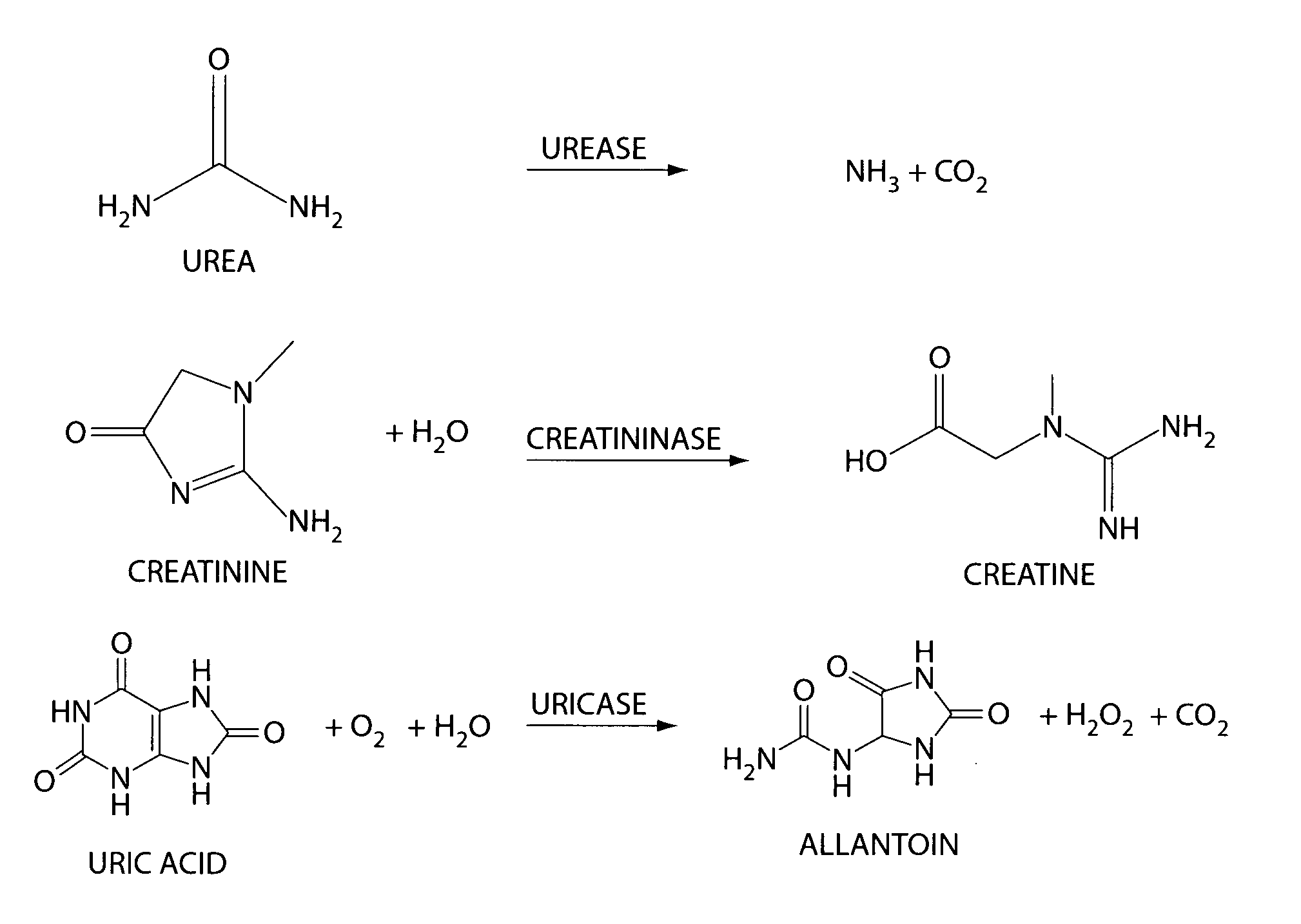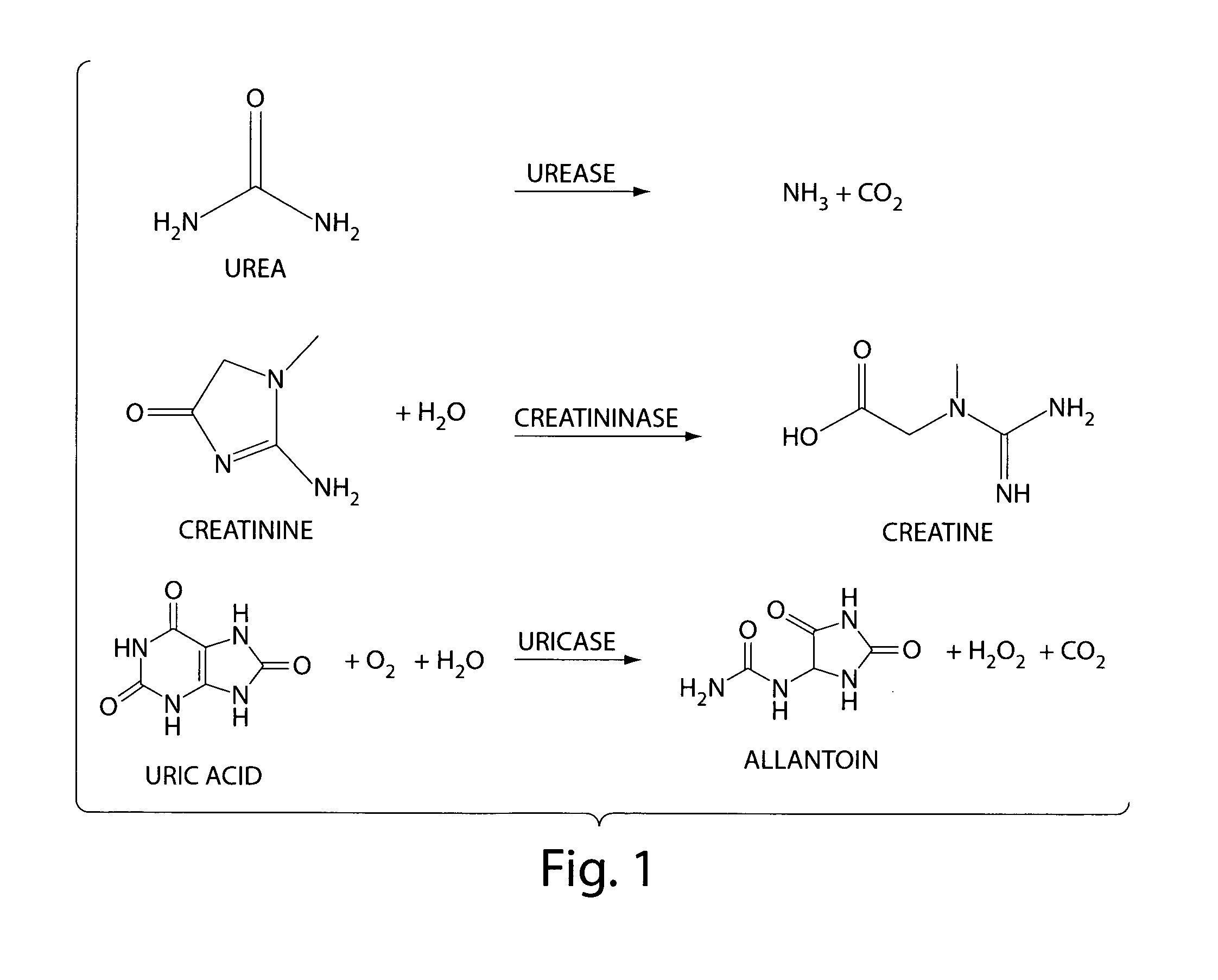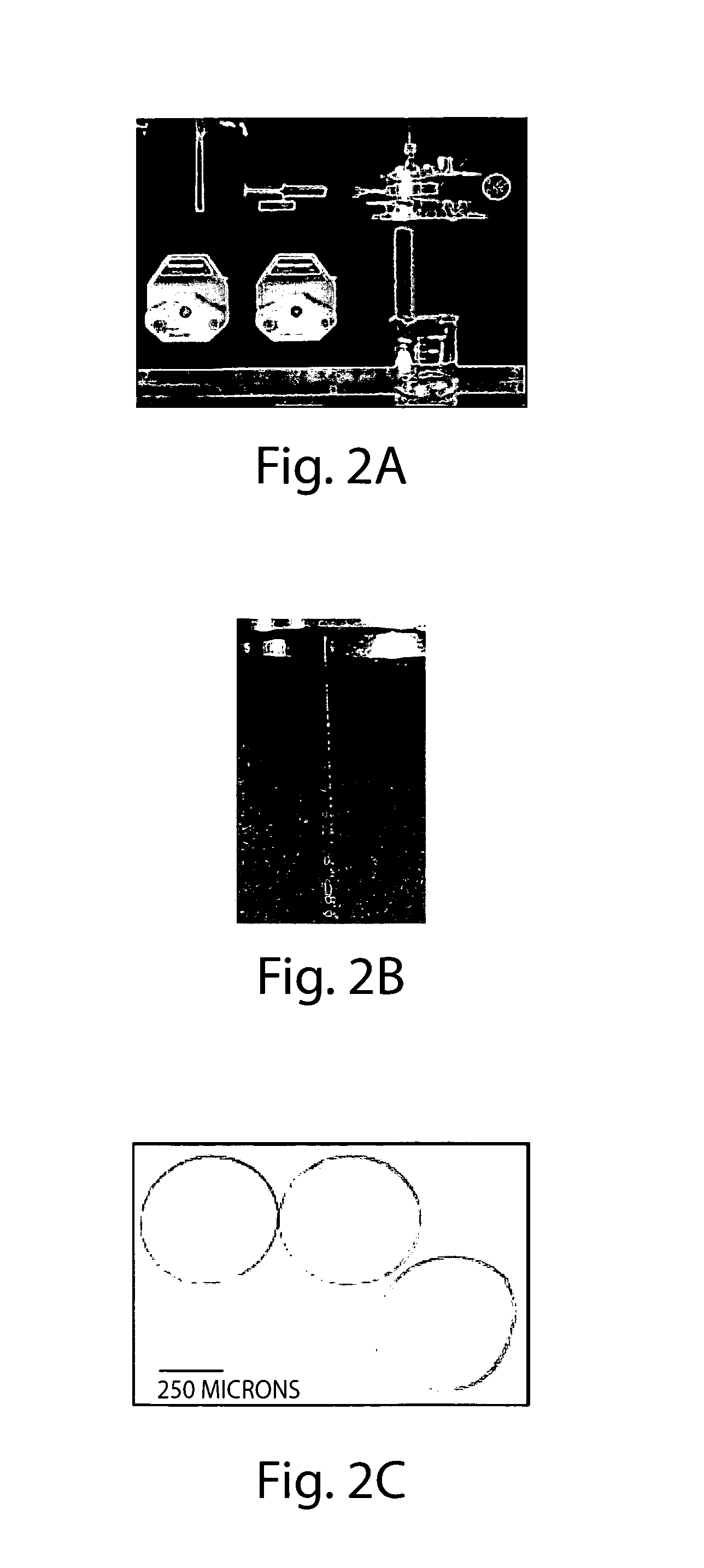Systems and methods related to degradation of uremic toxins
a technology of uremic toxins and degradation methods, applied in the field of treatment of disorders associated with uremic toxins in vivo, can solve the problems of dialysis treatment often interfering with normal activities of daily living, and the mortality rate in the u.s. is quite high
- Summary
- Abstract
- Description
- Claims
- Application Information
AI Technical Summary
Benefits of technology
Problems solved by technology
Method used
Image
Examples
example 1
[0075]A uremic test solution containing metabolites at levels comparable to those found in the blood of ESRD patients was prepared. The solution included urea (100 mg / dl) (Fisher Scientific), uric acid (10 mg / dl) (Sigma), and creatinine (10 mg / dl) (Fluka), dissolved in saline. The enzymatic reduction of these metabolites was measured using spectrophotometric assay (using kits from Sigma), at 535 nm, 686 nm, and 555 nm respectively. All experiments were conducted at 37° C. The solutions were maintained in an orbital shaker, and samples were stored in a −80° C. freezer between collection and measurement, except for the final time point.
[0076]To evaluate the capacity of unencapsulated enzymes to degrade the uremic toxins in the test solution, an enzyme-containing solution was prepared. The enzyme-containing solution included 800 units (50 mg) of urease from jack beans (solid powder), 10 units (0.6 mg) of uricase from Arthrobacter globiformis (aqueous solution) and 40 units (0.14 mg) of...
example 2
[0083]In this example, certain experiments, alginate capsules containing 30% barium sulfate (Mallinckrodt) by weight were fabricated for delivery into rats in an in vivo system. These capsules were otherwise identical to the capsules described previously in Example 1. Barium sulfate was added for X-ray visualization. Four Sprague-Dawley CD male rats weighing 250–300 g (Charles River Laboratories) were fed ˜1 ml of the capsules mixed with maple syrup by oral gavage. Full body X-rays were taken at 0.5 hours, 2.5 hours, 4.5 hours, 6.5 hours, 10.5 hours, and 24 hours. The rats were briefly sedated for the X-ray photos with isoflurane gas, and were allowed free access to food and water throughout.
[0084]X-ray photographs of a rat, as shown in FIG. 6, show a widespread dispersion of barium sulfate capsules throughout the digestive system of the rat and a measurable residence time of at least 12 hours in the G1 tract. The X-ray photographs are from one rat, but are representative of the fou...
example 3
[0086]In this example, following overnight water deprivation with free access to food, acute renal failure (ARF) was induced in cohorts of Sprague-Dawley CD male rats weighing 250–300 g (Charles River Laboratories) by intramuscular injection of hypertonic (50%) glycerol solution (glycerin, Mallinckrodt) at a dose of 10 ml / kg body weight, using methods similar to those described in Example 2. Plasma urea, uric acid, and creatinine levels were measured at time 0 hours, 1 hour, 3 hours, 5 hours, and 24 hours after injection, in both the lesioned rats and unlesioned control rats. Experiments were conducted on groups consisting of four rats, where three of the four received the injection, with one serving as a control. Blood samples were collected from the tail and placed in heparinized centrifuge tubes. The rats were briefly sedated during sample collection with isoflurane gas. After centrifugation, the samples were stored in the refrigerator and analyzed by assay after the final time p...
PUM
| Property | Measurement | Unit |
|---|---|---|
| time | aaaaa | aaaaa |
| time | aaaaa | aaaaa |
| time | aaaaa | aaaaa |
Abstract
Description
Claims
Application Information
 Login to View More
Login to View More - R&D
- Intellectual Property
- Life Sciences
- Materials
- Tech Scout
- Unparalleled Data Quality
- Higher Quality Content
- 60% Fewer Hallucinations
Browse by: Latest US Patents, China's latest patents, Technical Efficacy Thesaurus, Application Domain, Technology Topic, Popular Technical Reports.
© 2025 PatSnap. All rights reserved.Legal|Privacy policy|Modern Slavery Act Transparency Statement|Sitemap|About US| Contact US: help@patsnap.com



